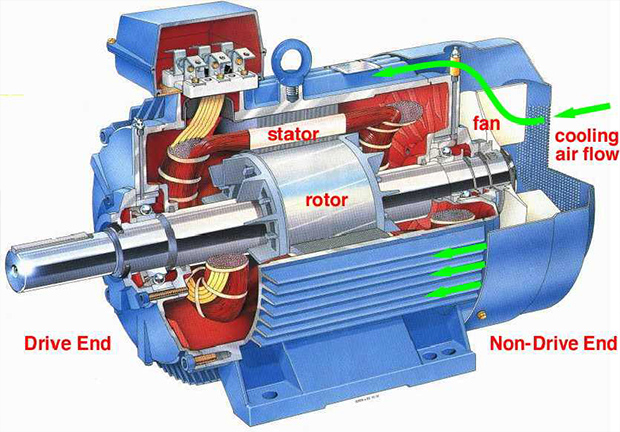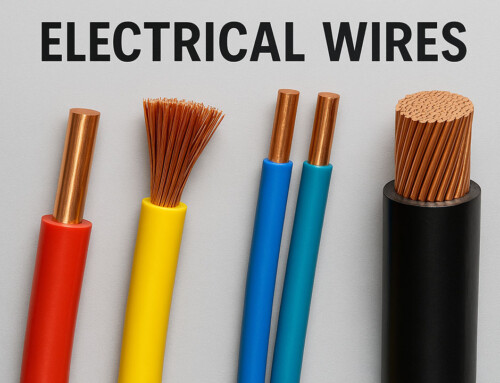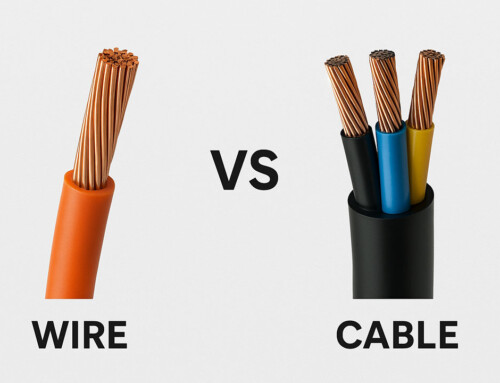Table of Contents
A motor soft starter is used to protect the motor and other connected equipment from damage through controlled terminal voltage. Thus, it a device that is used in AC electrical motors to momentarily lessen the load and torque within the power train as well as the electric current surge of the motor when starting up. This decreases mechanical stress on the shaft and motor and electrodynamic stress on the power cables attached as well as the electrical distribution network. Limiting the initial inrush of current and reducing mechanical shock that is associated with the motor startup helps extend the system’s lifespan.
Motor Starter Methods
There are three basic motor starter technologies namely:
- Direct-on-line technologies (DOL) starters or across the line startersThese starters apply full current, voltage and torque immediately to the motor soon after the motor command. DOL methods run on the most basic motor starting capabilities.
- Soft startersThey are also called smart motor controller, these starters mange voltage actively to control the starting and stopping current and torque profiles to enhance mechanical and electrical characteristics of the motor, machine operation and motor circuit. Soft starters are economical for those applications that need motor control when starting and stopping as they have more advanced control compared to DOL options.
- Variable frequency drivers (VFDs)Variable frequency drivers convert the AC line voltage to DC voltage and that is then inverted back to the motor’s simulated AC voltage. VDFs rely on motor control through the start, runtime and stop.
Soft Starter Application
Soft starters may be set up to meet the requirements of specific individual applications. For instance, it can avoid pressure surges in pump applications and facilitate smooth starting in conveyer belt systems while avoiding stress and jerk on drive components. Fans and other systems that have belt drives can start slowly while avoid slipping.
Soft starts can be found in electrical R/C helicopters while enabling the rotor blades to spool up in a smooth and controlled manner as opposed to a sudden surge. A soft start restricts the inrush current thus improving stability of power supply and reducing transient voltage drops that often affect other loads. Ultimately, you will do well to ask a number of questions when determining potential consideration for soft starters:
- Does the application require speed control when the motor is at speed?
- Is there need for the application’s precise stopping and starting?
- Is there need for full torque when the application is at zero speed?
- Is there need for constant torque by the application?
- What are the sizes, thermal and cost considerations?
- Are there harmonics and installation concerns?
How does a soft starter work?
Semiconductor devices are used by solid state soft starter to reduce the motor terminal voltage, albeit temporarily. This offers control over the motor current in reducing inrush as well as limiting shaft torque. The control is founded on controlling motor terminal voltage on two to three phases. Limiting motor voltage reduces torque that is provided for gradual start of the load.
There are three possible ways to motor starting:
- Application of part winding starting: autotransformer starter
- Gradual application of reduced voltage: Soft Starter and Star Delta Starter
- Application of full load voltage at intervals of time: Direct On Line Starting
Benefits of Choosing a Soft Starter
The advantages of using a soft starter are usually the more economical choice for those applications that need torque control and speed in the course of startup. In addition, they are an ideal answer for applications where the concern is space as they take less space compared to variable frequency drives.
Types of Control Using Soft Starter
There are two main types of control using soft starter:
- Closed-loop control
With the starter, motor output characteristics such as the speed monitored, the current drawn or the starting voltage are modified as needed in order to generate an anticipated response. The current in every phase is monitored. Consequently, the time voltage ramp may be halted if it surpasses a certain set point. - Open control
A start voltage is applied gradually regardless of the speed of the motor or current drawn. Two SCRs are connected back to back for each phase where the SCRs are conducted initially at 180 degrees delay in the course of respective half wave cycles (where every SCR conducts). The delay is gradually reduced with time until applied voltage ramps to the full supply voltage. This is also known referred Time Voltage Ramp System. Even then, this method is not relevant because it does not control the acceleration of the motor.
Components of a basic soft Starter
- Control logic using PID controllers or microcontrollers as well as other logic to control the application of gate voltage linking to the SCR. That is, to control SCRs the firing angle so as to enable SCR conduct at the recommended part of the supply voltage cycle.
- Power switches such as SCRs that need phase controlling so that they are applied for every part of the cycle. For instance, a 3 phase more requires two SCRs to be connected for each phase back to back. The switching devices must then be rated at least three times more compared the line voltage.
Here is an example of electronic soft start system for 3-phase induction motor. The system comprises of two back to back SCRs for every phase making it a total of 6 SCRs. The control logic circuitry in the form of two comparators produce the ramp voltage and level as well as an opto-isolator that controls gate voltage application to each of the SCR phases. A power supply circuitry will then be used offer the dc voltage supply that is required.
Advantages of Soft Starter
A soft starter offers multiple advantages making it preferable in different settings. Here are some top advantages of soft starter:
- Improved efficiency – The soft starter system offers more efficiency using the solid state switches because of the low on state voltage.
- Controlled startup – Soft starters facilitate smooth control of the starting current by altering the starting voltage easily thereby ensuring the motor starts smoothly without jerking.
- Low size and cost – The use of solid state switches guarantees this.
- Controlled acceleration – Smooth control of motor acceleration.
So when do you use a soft starter?
Soft starters may be used in a range of applications. They include the following:
- Applications that have medium or low starting torque. Torque control and speed ramping are needed when stopping or starting. A gradual controlled is recommended in avoiding torque spikes as well as tension within the mechanical system that is linked with the equipment startup. These include gears, belt driven, conveyors and couplings.
- Applications that are lightly loaded.
- Controlling high inrush currents that are linked with starting a large motor and need to be restricted to prevent penalty charges or supply network issues.
- Soft starters help in minimizing mechanical damage and wear to the system by avoiding possible pressure surges within the piping systems whenever there is a rapid change in the fluid.
- Power monitoring.
- Little or lack of speed control in the run mode.
Generally, controllers offer different features based on the applications of the motor. Thus, they are instrumental in letting the motor start in low voltage conditions, allowing reverse control operations or multiple speed, offering protection from overload faults and over current as well as perform a wide range of functions.






